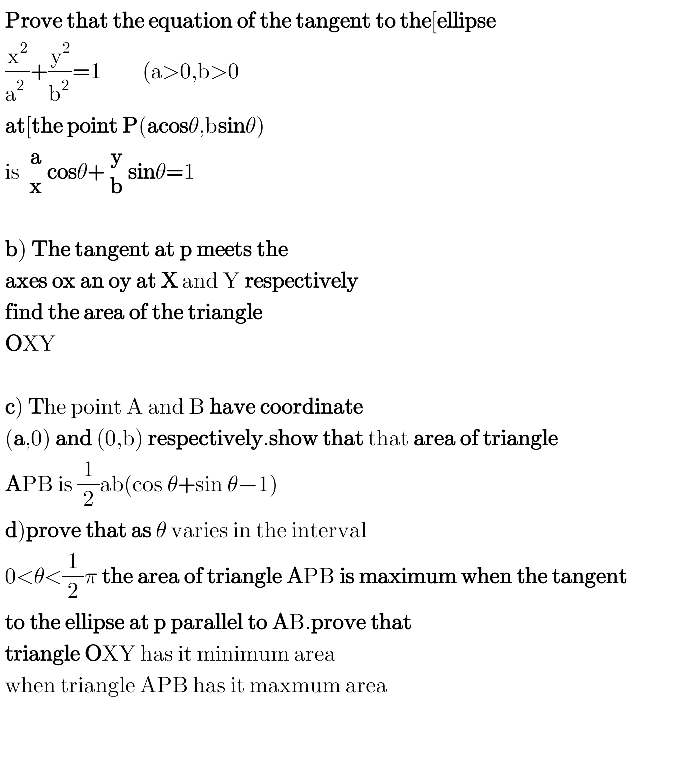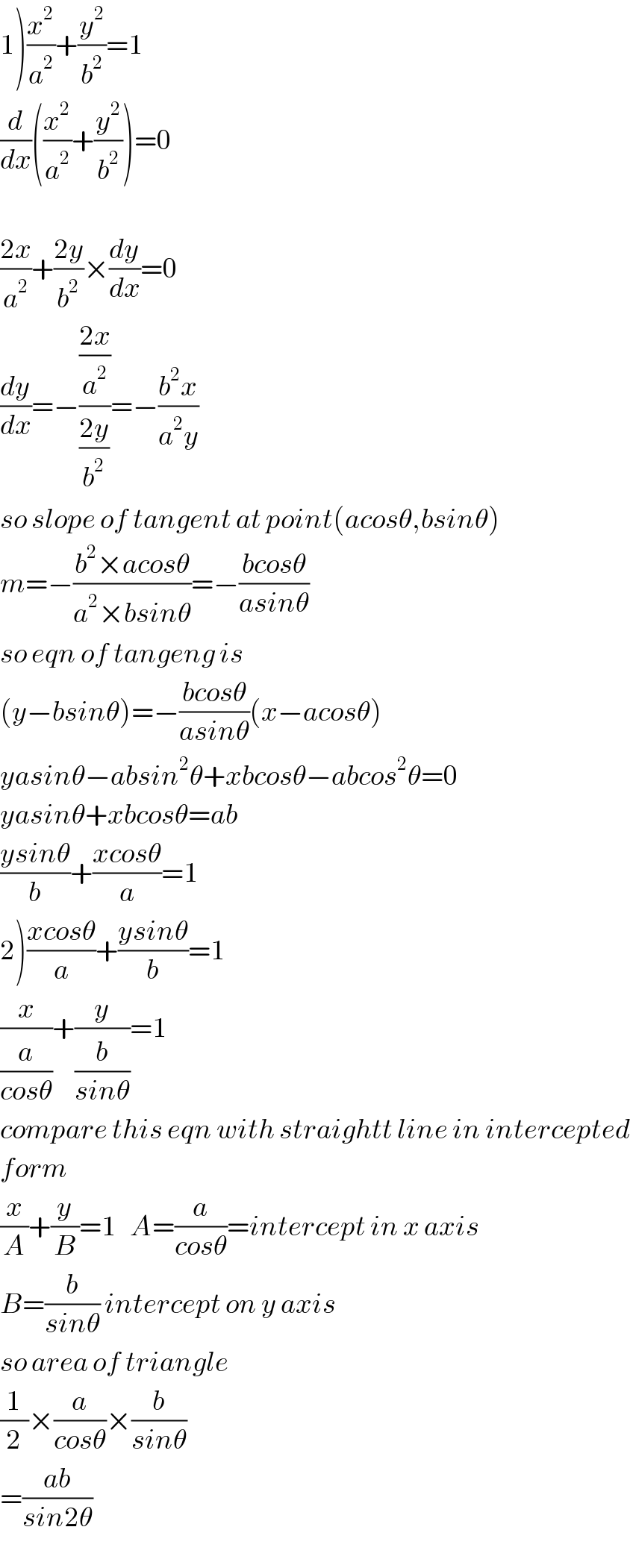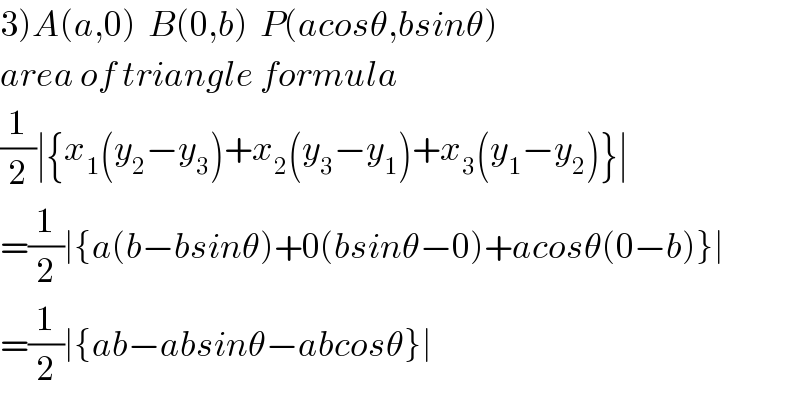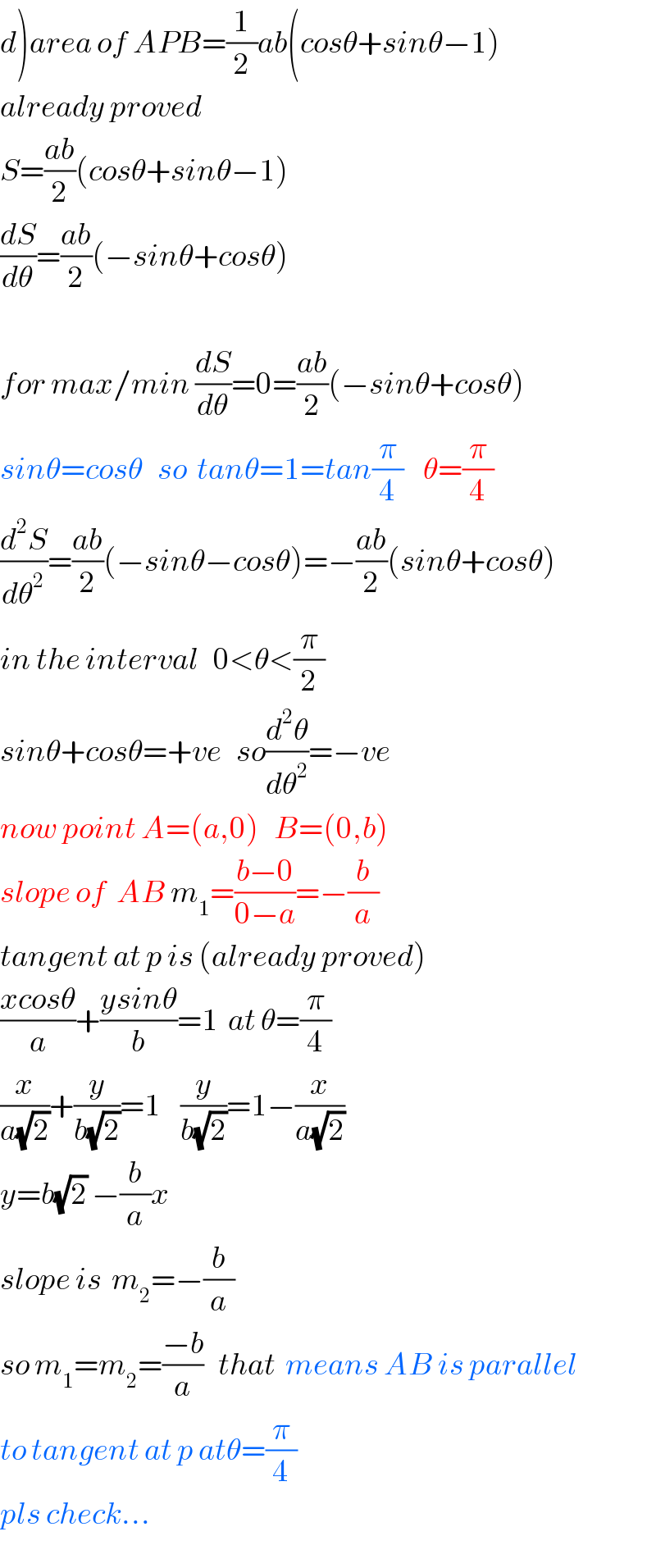
Question and Answers Forum
Question Number 45639 by peter frank last updated on 14/Oct/18

Answered by tanmay.chaudhury50@gmail.com last updated on 15/Oct/18

Answered by tanmay.chaudhury50@gmail.com last updated on 15/Oct/18

Answered by tanmay.chaudhury50@gmail.com last updated on 15/Oct/18

Commented by peter frank last updated on 19/Oct/18

